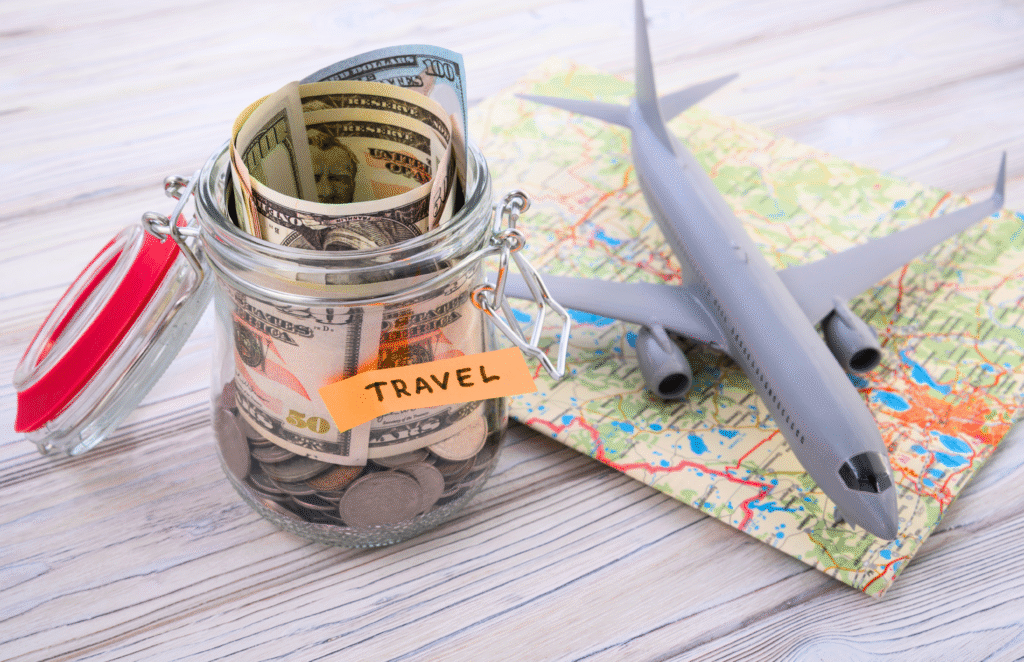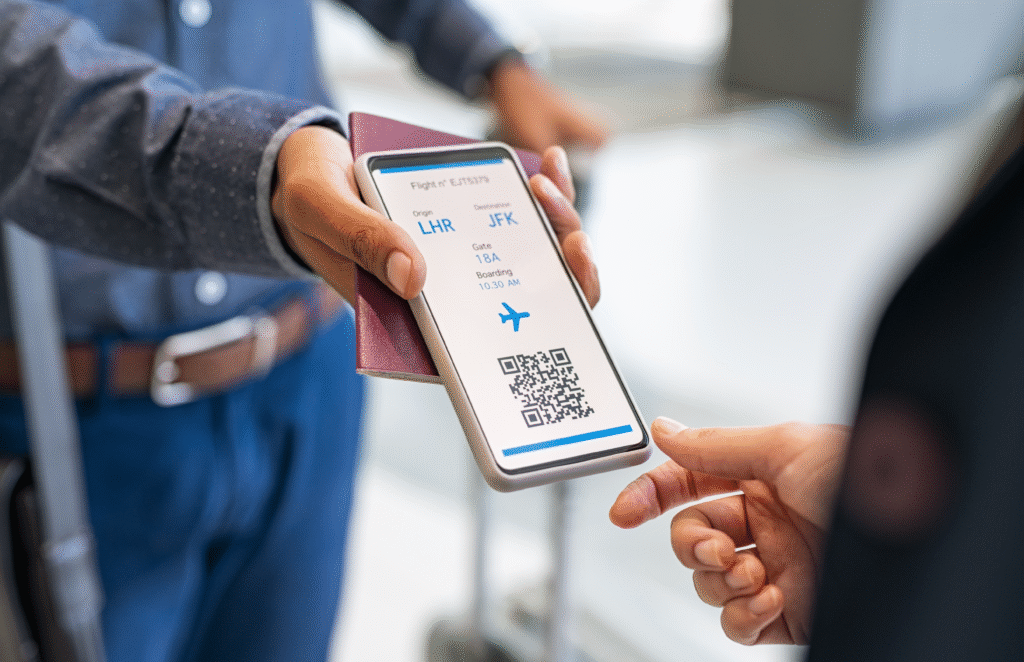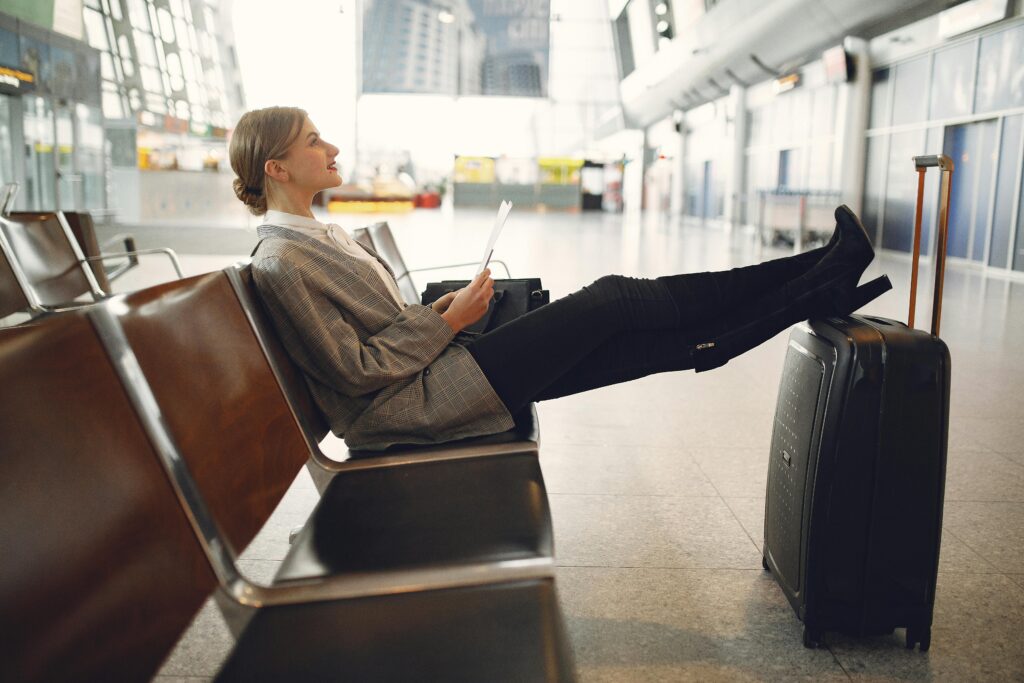
How to score the cheapest flights with these budget travel tips that actually work?
Perhaps you’re incredibly itching to pack your bags and board a plane to travel, but you’re worried you might drain your bank account.
We totally get it. Who doesn’t want to travel, anyway?
Scoring the cheapest flights can be fun once you know the tricks. Imagine this: you’re using some cool flight comparison tools, and bam! You find a deal that makes you do a happy dance.
But timing is vital, my dear friend, so keep this important advice in mind before you get too eager to schedule that great flight and realize it’s too late to back off. Consider it like shopping for ripe fruit from the market; if you pick them at the correct moment, they will be tasty and satisfying; but, if you wait too long, you could wind up with something damaged and pricey. Making the right choice at the right moment can make all the holy difference in your travel experience, so take a moment to carefully, again, “carefully” strategize.
Lucky for you, we’ll share when to book to get the best prices. Whether planning a big vacation or just a quick escape, stick to this page, and we’ll show you how to find those sweet deals and keep your wallet happy. Ready to start this journey with some extra cash in your pocket? Let’s get going!
1. Use Flight Comparison Tools Like a Pro
Okay, let’s start with the obvious and that is taking advantage of flight comparison tools. If you are a frequent traveler, these tools are your best buddies. But if this is your first trip, think of them as your personal travel detectives, letting you scour the busy web to uncover the best deals. Tools like Skyscanner, Google Flights, and Kayak are the Sherlock Holmes of the skies—solving the mystery of how to save on flights.

Here’s how to make the most of them:
Skyscanner
Perfect for flexible travelers. Use the “cheapest month” feature to find the most affordable times to fly.
Google Flights
Love filters when searching for something? Luckily, this tool lets you compare flight durations, layovers, and even specific airlines. Plus, its calendar view shows price trends over weeks or months.
Kayak
Set up price alerts and let Kayak do the heavy lifting. So when prices drop, this tool will automatically ping you, and jackpot! You’ve just found your perfect day to travel at the right price! You may hit that book button and start packing your bags! Again, it’s about booking at the ideal moment.
Pro tip: Always search in incognito mode to avoid price hikes caused by cookies. Trust us, your wallet will thank you.
These tools are like having a secret weapon in your travel arsenal. Why pay more when you can find cheap airfare with just a few clicks?
2. Flexibility is Your Superpower
Ever noticed how flights are cheaper on Tuesdays or at 6 a.m.? If you can bend a little, you’ll save a lot. Being flexible with your travel dates and times is like winning a golden ticket to cheapest flights.

Photo by Austin Distel on Unsplash
Here’s how to make flexibility work for you:
Fly Mid-Week
Tuesdays, Wednesdays, and Thursdays are your golden days to book flights. Business travelers usually flock on Mondays and Fridays, leaving mid-week flights less crowded and cheaper.
Travel Off-Peak
Travel Off-Peak: Skip the holiday rush and aim for shoulder seasons (think early spring or late fall). Take note: Fewer crowds, lower prices—win-win!
Embrace Red-Eye Flights
For sure, flying at 2 a.m. with your heavy luggage (and heavy eye bags) isn’t glamorous, but neither is paying double for a midday flight.
A little flexibility can go a long way. Why not save hundreds just by shifting your plans a bit?
3. Think Outside the (Airport) Box
Big airports, big prices—sound familiar? Well, come closer so I can whisper you a little secret: smaller, alternative airports can be a goldmine for the cheapest flights? Think of it like this: while everyone’s rushing to the main gates, you’re slipping through a hidden side door with a killer deal in hand.

Photo by Gustavo Fring on Pexels
For example, instead of battling the chaos (and costs) of LAX, why not fly into John Wayne Airport in Orange County or Hollywood Burbank Airport? Both are quieter, cheaper, and just a short ride from the heart of LA.
But this trick isn’t just for the U.S.! Heading to Europe? You may skip the madness of London Heathrow and check out London Gatwick or even London Stansted. Flying to Japan? Narita Airport in Tokyo is huge, but Haneda Airport is closer to the city and often has better deals.
Why pay more for the same destination?
So here’s why smaller airports rock:
- Lower Costs: Fewer fees mean cheaper flights.
- Less Stress: Shorter lines and quicker check-ins.
- Budget-Friendly Transport: Many offer affordable shuttles to city centers.
Don’t limit yourself to the big hubs. Sometimes, the road less traveled leads to the best savings—and a smoother travel experience.
4. Unlock the Magic of Travel Rewards
Want to turn your daily coffee runs into free flights? Yes, you heard that right, my loyal traveler—your caffeine addiction could literally take you places! Frequent flyer programs and travel credit cards are your super awesome genies who can grant you a travel wish!
And no, this isn’t some too-good-to-be-true scam because they actually work. Seriously, your morning latte could be your ticket to Tokyo. How’s that for a perk?

Here’s how to maximize them:
Sign-Up Bonuses
Many cards offer enough points for a free flight just for signing up. It’s like getting a welcome hug from your credit card—except this hug comes with a free ticket to Bali.
Earn While You Spend
Use cards that reward travel-related purchases like dining or fuel. Who knew your daily coffee habit could one day fund your flight to Paris? Latte points, anyone?
Join Airline Alliances
Programs like OneWorld or Star Alliance let you share points across multiple airlines. It’s like having a universal remote, but for flights—click once, fly everywhere.
Why pay full price when you can fly for free? Start stacking those points today!
5. Look for Hidden Charges
Ah, hidden fees—the ultimate buzzkill for those seeking the least expensive flights. Cue the dramatic sigh. You discover at checkout that a flight you thought would be a discount is doubled in cost. Not too strange.

Photo by Adrien Olichon on Pexels
Particularly well-known for this are budget carriers. With a low base ticket, they entice you in; then, for everything from baggage to breathing—okay, maybe not breathing—they whack you with additional charges.
Here’s how you stay from being ambushed:
Typical offenders to look for are baggage fees
Perhaps that “cheap” airfare does not include a carry-on. Indeed, you did read correctly—some airlines charge you simply to carry a bag on board. Before making a reservation, always review the baggage regulations; if you must add a bag, do it online—usually this is less expensive than paying at the airport.
Selecting a seat
Want to catch a window seat or sit with your travel friend? That would cost you. Skip this charge and save if you are cool with a random seat.
Certain airlines charge additional fees specifically for the convenience of online booking. Since evidently only a premium service is clicking “confirm.”
Tip: Travel benefits on a credit card will help you. Many cards allow free checked bags or even priority boarding, so avoiding some expenses. And once more, always look for flights under incognito mode to prevent repetitive searches driving price increases.
Hidden fees irritate and cost like that one friend who constantly “forgets” their money at dinner. With with knowledge, though, you can outsmart them and preserve your budget. Who claims you cannot challenge the system?
6. Time is Everything
Let’s discuss timing since, when you book flights, you consider not just when you fly but also when you book. If you nail this, you will be sipping champagne in first class (or at least economy with extra legroom) without going over budget.
Airlines are running games with pricing, just as dating applications do. Unlike dating, though, if you know the rules, you can really win this game.

Photo by Daria Strategy on Unsplash
Important Advice About Timing Your Booking
International Flights
Traveling internationally normally requires reserving three to six months in advance. Wait too long, and prices explode. Book too early, and you may pass on a last-minute bargain. Like Goldilocks, you want it exactly.
Domestic Flights
For shorter distances, try to reserve two to three weeks before travel. Any earlier, and you probably overpaid. Any later, and you are playing with availability.
Fare Alerts
Sites like Google Flights or Hopper should be configured to send alerts when prices fall. These tools will signal you so you can swoop in like a travel ninja and grab the best bargain.
Regarding peak seasons, what comes first?
Traveling during summer or a holiday? You are about to be challenged. Prices are higher; at Costco, seats vanish more quickly than free samples. Book far in advance, say, “I just bought next year’s Christmas gift,” early if you have to travel during busy seasons. Alternatively, consider traveling during shoulder seasons, those weeks before or following peak season. You will dodge the throngs and save money. Win-forward!
Pro Tip: Tuesdays and Wednesdays are often the best days to schedule flights. Airlines usually release bargains early in the week, and by midweek, they have matched rivals. You are invited, and it feels like a price-drop party.
Timing your airline reservation is like riding a wave; do it well, and you will ride straight to savings. If you do it wrong, you will be wiped out with a costly ticket. Create those alarms, mark your calendar, and get ready to book like a pro. Thank you from your wallet—and from your future self.
7. Accept Stopovers and Layovers
To be really honest, nobody enjoys layovers. Often disregarded and occasionally disruptive, they are like the awkward middle child of travel—secretly full of potential. The secret is that if you’re ready to welcome them, stopovers and layovers will be your pass to the least expensive flights and maybe even bonus experiences.

Photo by Gustavo Fring on Pexels
Why are layovers rock?
- Flights with layovers are often far less expensive than direct paths. Think of it as spending less to receive more—at least more travel time.
- Bonus Research: A few airlines, such as Turkish Airlines and Icelandair, provide free or cheap stopovers. You can thus spend a day or two free visiting a new city before your last stop. Would you like a whirlwind trip to Istanbul’s Grand Bazaar or a fast plunge in Iceland’s Blue Lagoon? Layovers provide access.
But regarding the time?
Though they add hours—or perhaps a day—layovers help you to see your trip as an adventure rather than merely transit. That extra time may allow one to enjoy peaceful coffee in an airport lounge or find a hidden treasure in a new city. And let’s face it, isn’t it better than flying straight through and losing the trip?
Though they may not be flashy, layovers are like the underdog of travel—humble, underappreciated, and surprising. Therefore, avoid scrolling past the flight you next see with a layoff. Accept the diversion, save money, and maybe include a fresh location in your travelogue. After all, the journey is what defines life—including travel.
It’s Time to Grab Your Ticket to Cheap Flights
Finding the best airfares shouldn’t seem like trying to solve a Rubik’s Cube blindfold-based puzzle. These ideas will help you become a budget travel guru very quickly. To find hidden offers, look through flight comparison tools such as Google Flights and Skyscanner. Keep your dates and hours flexible; going midweek or during off-peak seasons could save you a lot of money. Ensure you investigate other airports; smaller hubs usually translate into more savings.

Photo by Syda Productions on Canva
Sign up for frequent flying programs and use travel credit cards to transform daily spending into free flights to maximize travel rewards. Look for hidden costs; those little expenses can make a budget bust out from a cheap flight impossible. Time your booking carefully; for local flights, aim for two to three weeks; for overseas travel, three to six months ahead. Don’t hesitate about layovers; they could add a few hours to your trip, but they can also save money and even let you see a new city en route.
Now, get your passport, get ready to pack, and begin to budget your next trip. Traveling for less is the only thing better than traveling. Ready to reserve?







Leave a Reply